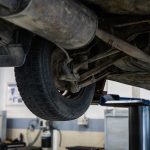If you’re a car enthusiast, you understand the thrill of a smooth and responsive ride. One critical factor influencing your vehicle’s handling is wheel alignment. In this article, we delve into the often-overlooked realm of poor wheel alignment and its profound effects on the handling of your beloved automobile.
Understanding Wheel Alignment
Before we delve into the effects, let’s clarify what wheel alignment entails. Wheel alignment refers to the precise adjustment of the wheels to the manufacturer’s specifications. This includes adjusting the angles of the wheels relative to each other and the car’s body, ensuring optimal contact with the road.
The Ripple Effect of Poor Wheel Alignment
1. Uneven Tire Wear
One of the earliest signs of poor wheel alignment is uneven tire wear. Misaligned wheels exert uneven pressure on the tires, causing them to wear irregularly. This not only shortens the lifespan of your tires but also compromises their performance.
2. Reduced Fuel Efficiency
Poor wheel alignment can lead to increased rolling resistance, requiring more effort from your engine to move the vehicle. The additional strain results in decreased fuel efficiency, translating to more frequent trips to the gas pump and higher expenses for the car enthusiast.
3. Compromised Handling and Steering Response
The most palpable effect of poor wheel alignment is compromised handling. Misaligned wheels can cause your vehicle to pull to one side, requiring constant steering correction. This not only diminishes the driving experience but also poses safety risks, especially during emergency maneuvers.
4. Strain on Suspension Components
Misaligned wheels place excessive stress on suspension components. This added strain can lead to premature wear and tear, resulting in a bumpy and uncomfortable ride. Addressing alignment issues promptly can preserve the integrity of your suspension system.
5. Impact on Braking Performance
Proper wheel alignment is integral to optimal braking performance. Misaligned wheels can lead to uneven braking, causing your vehicle to pull to one side during braking. This compromises the effectiveness of your braking system, posing a significant safety concern.
Evaluating Wheel Alignment Issues
1. Vehicle Pulling to One Side
If your car tends to drift or pull to one side, even on a straight road, it’s a clear indication of poor wheel alignment. This requires immediate attention to prevent further complications.
2. Uneven Tire Wear Patterns
Regularly inspect your tires for uneven wear patterns. If you notice excessive wear on one side or in specific areas, it’s likely due to poor wheel alignment.
3. Off-Center Steering Wheel
An off-center steering wheel, where the emblem is not aligned with the center of the driver’s position, is another telltale sign of alignment issues. This can affect your driving comfort and vehicle control.
Addressing Wheel Alignment Woes
1. Regular Alignment Checks
Schedule regular wheel alignment checks, especially after hitting potholes or curb impacts. Proactive maintenance can prevent alignment issues from escalating.
2. Professional Wheel Alignment Services
Seek the expertise of a professional mechanic for wheel alignment services. They have the tools and knowledge to precisely adjust the angles, restoring your vehicle’s alignment to optimal levels.
3. DIY Alignment Checks
While not as accurate as professional services, you can perform basic alignment checks at home. Ensure that your tires are properly inflated, and visually inspect them for signs of uneven wear.
Conclusion
For car enthusiasts who revel in the joy of driving, poor wheel alignment is a silent saboteur that can compromise the very essence of a smooth and responsive ride. Understanding the effects and promptly addressing alignment issues is crucial for preserving the performance, safety, and longevity of your cherished automobile.
FAQs:
How often should I get my wheels aligned?
Aim for a wheel alignment check every 6 months or after hitting significant road hazards.
Can poor wheel alignment cause vibrations in the steering wheel?
Yes, misaligned wheels can lead to vibrations in the steering wheel, affecting driving comfort.
Is wheel alignment covered under regular car maintenance?
While it’s not always included, some maintenance packages may offer wheel alignment checks. Check with your service provider.
Can I drive with slightly misaligned wheels?
While it’s not recommended, slight misalignment may not cause immediate harm. However, addressing it promptly is crucial to prevent further issues.
Are wheel alignment issues covered by car warranties?
Check your warranty details; some warranties may cover alignment issues, especially if they arise from manufacturing defects.
Last Updated on November 18, 2023 by admin

Mac is an Automotive enthusiast. He owns up to 15 vehicles. He deals with Auto problems and shows his skill to Car owners who are seeking any type of Car help.





